Batagur kachuga Confiscation
by Jordan Gray
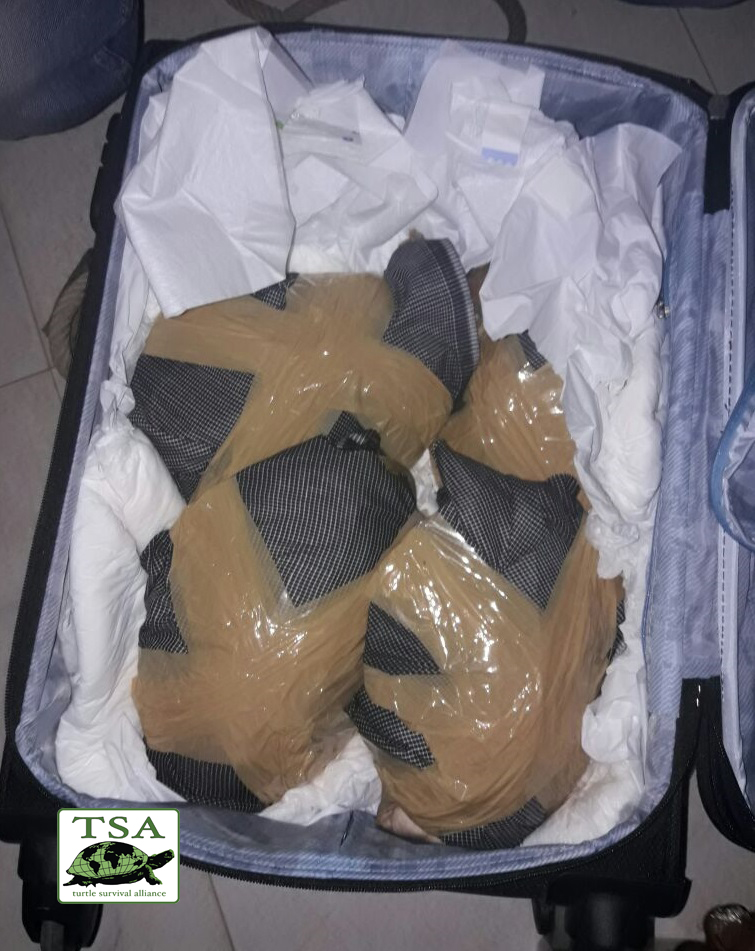
Turtles packed in suitcase for shipment
This year’s vernal equinox not only marked the first day of Spring, but also a day of significance for 23 Critically Endangered turtles in India. While it is never a good day when we hear about a confiscation of some of the rarest turtles on the planet, it is good to witness the quick actions of our collaborating partners, and the expertise of our team, as they come together to ensure a future for these animals.
On the 20th of March, Shailendra Singh from TSA India reported the confiscation of 23 critically endangered red-crowned roofed turtles, Batagur kachuga, destined for foreign markets. Confiscated from two poachers linked with an illegal international wildlife trade network in the Uttar Pradesh state of India, the extremely rare turtles were immobilized with packaging supplies and stuffed into suitcases, bound for Chennai on India’s southeast coast.

Male B. kachuga restrained with packing supplies
In a testament to the quick action taken by the Uttar Pradesh Special Task Force (UPSTF) and the Wildlife Crime Control Bureau, the poachers were taken into custody and the turtles seized before the bonded animals could make the grueling 2,000-kilometer train trip from Agra, Uttar Pradesh to Chennai, Tamil Nadu, India.
Arguably one of the most striking turtles in the world, with males exhibiting colors on the head and neck that one could only conceive on a painter’s pallet, the red-crowned roofed turtle is also one of the rarest. Despite an extensive historic range of northern India, Nepal and Bangladesh, this turtle is rarely found, living only in isolated populations, and believed extirpated from most of its former haunts.
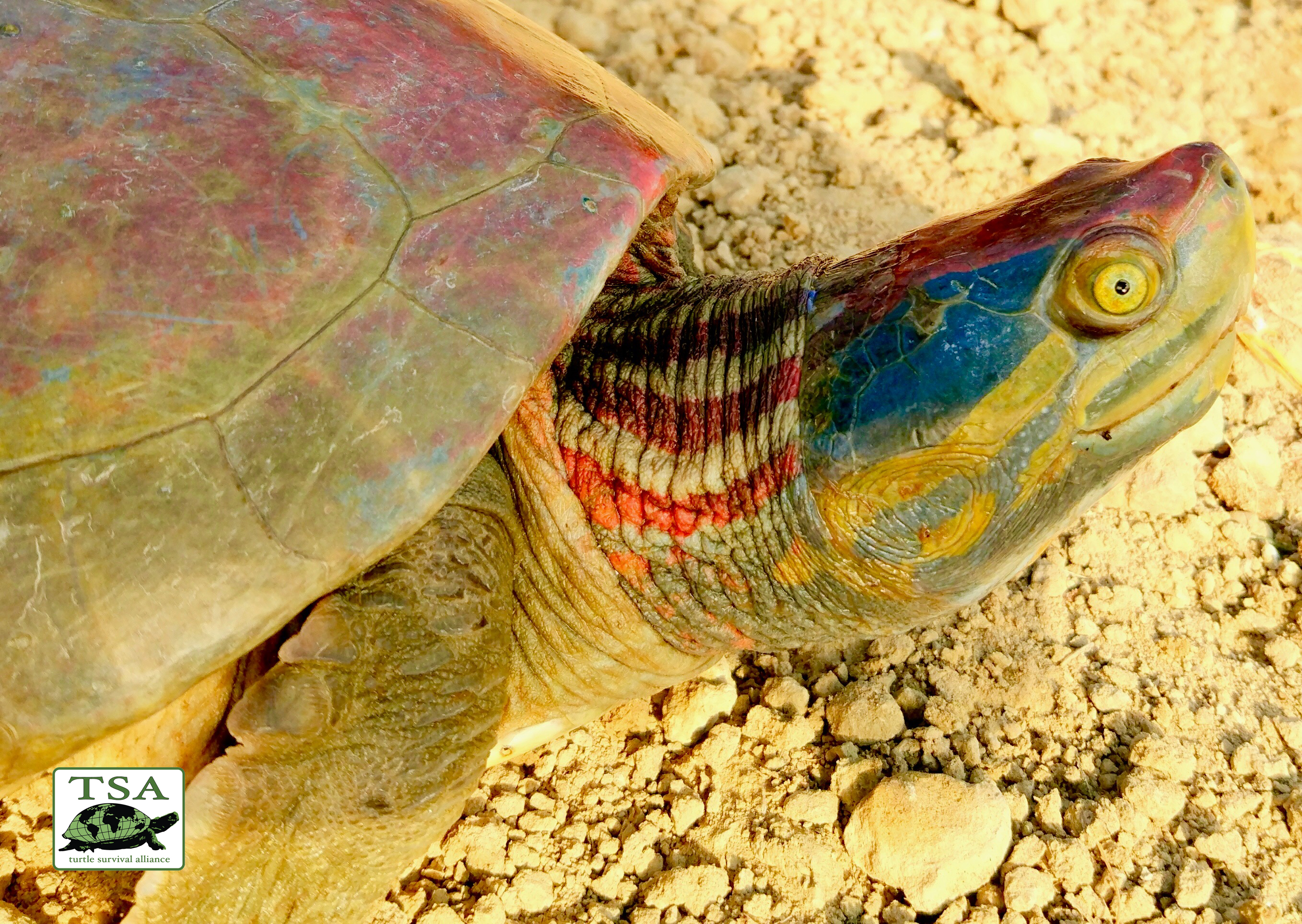
Male B. kachuga in breeding coloration
The last stronghold for the species lies within the National Chambal Sanctuary within the Rajasthan, Madhya Pradesh and Uttar Pradesh states of northern India. Still, this segment of the Chambal River where the species resides is heavily impacted by sand collection, riverside agriculture, extensive flooding and clandestine activities such as fishing, all of which represent continued threats to the survival of this population. The Turtle Survival Alliance, in collaboration with the Uttar Pradesh Forest and Wildlife Department, is heavily involved with nest monitoring, egg protection and relocation, and rear-and-release of this magnificent animal in the National Chambal Sanctuary.
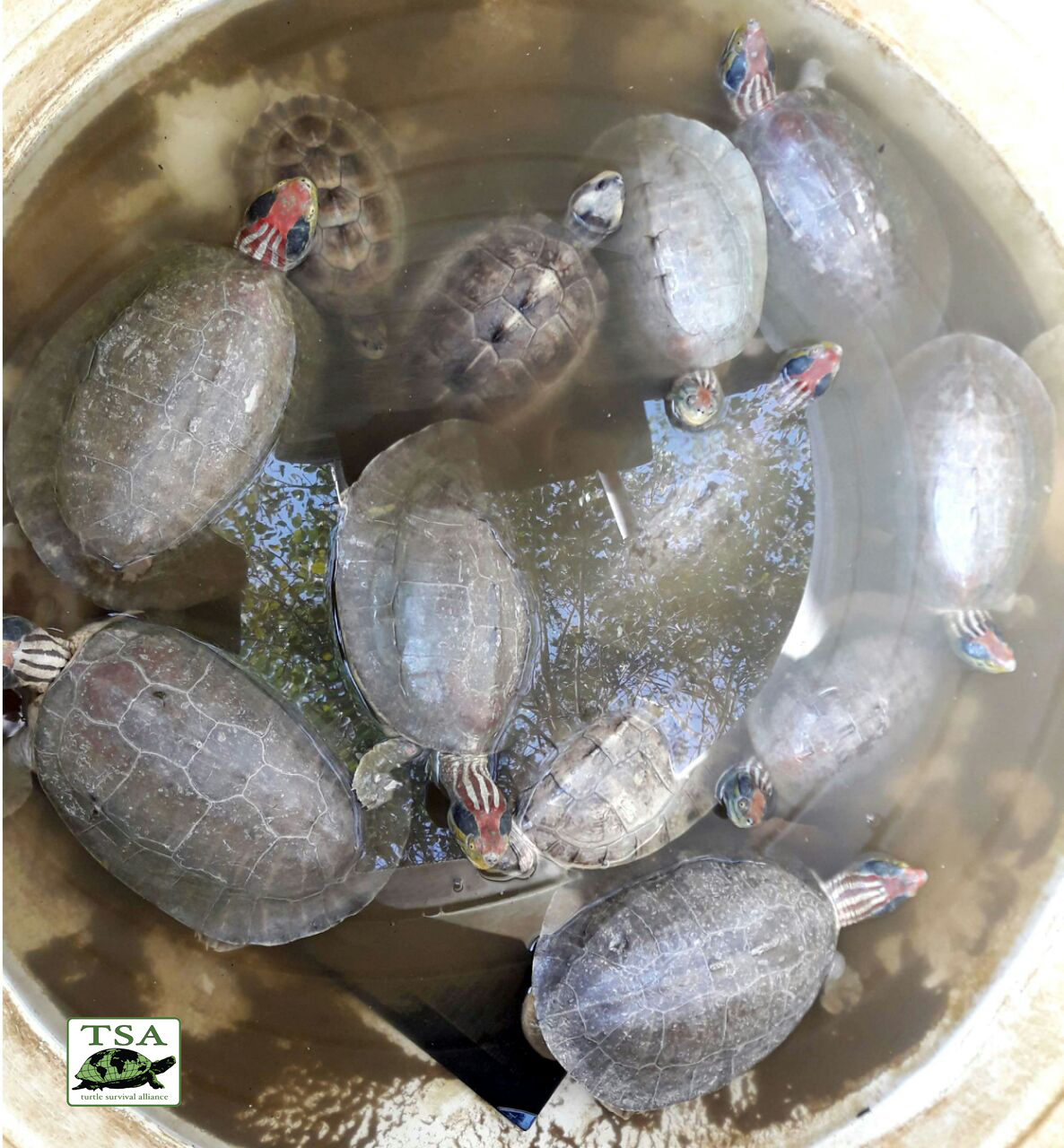
Group of B. kachuga after their confiscationAs with most confiscations of this type, in which the animals are packaged for shipment, the 23 male, female and juveniles turtles were in need of immediate veterinary assistance. This assistance was quickly found with the Wildlife SOS-India, Agra unit and Etawah Safari Parks. Established in India in 1995, Wildlife SOS is a non-profit organization dedicated to protecting India’s wildlife and wildlife habitats. As poached turtles are often held in dismal conditions by the wildlife traffickers, with little room to move, and little to no food or water, triage including the administration of subcutaneous fluids, antibiotics, and wound treatment are often the first step to recovery.
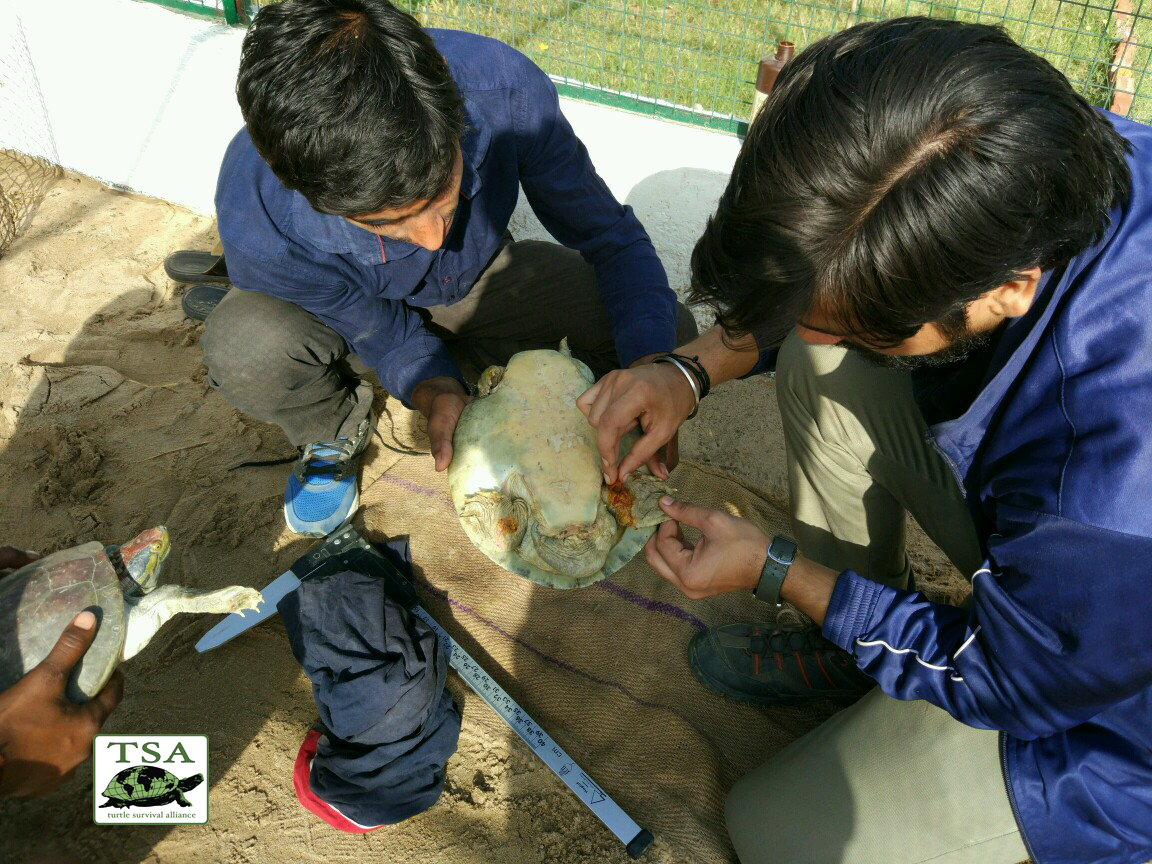
Examining a kachuga post-confiscationDespite one of the male turtles dying in the first week post-confiscation, and another individual under continued veterinary care, TSA field team is proud to announce that 21 of the 23 turtles responded positively to the provided care and are well on the way to recovery!
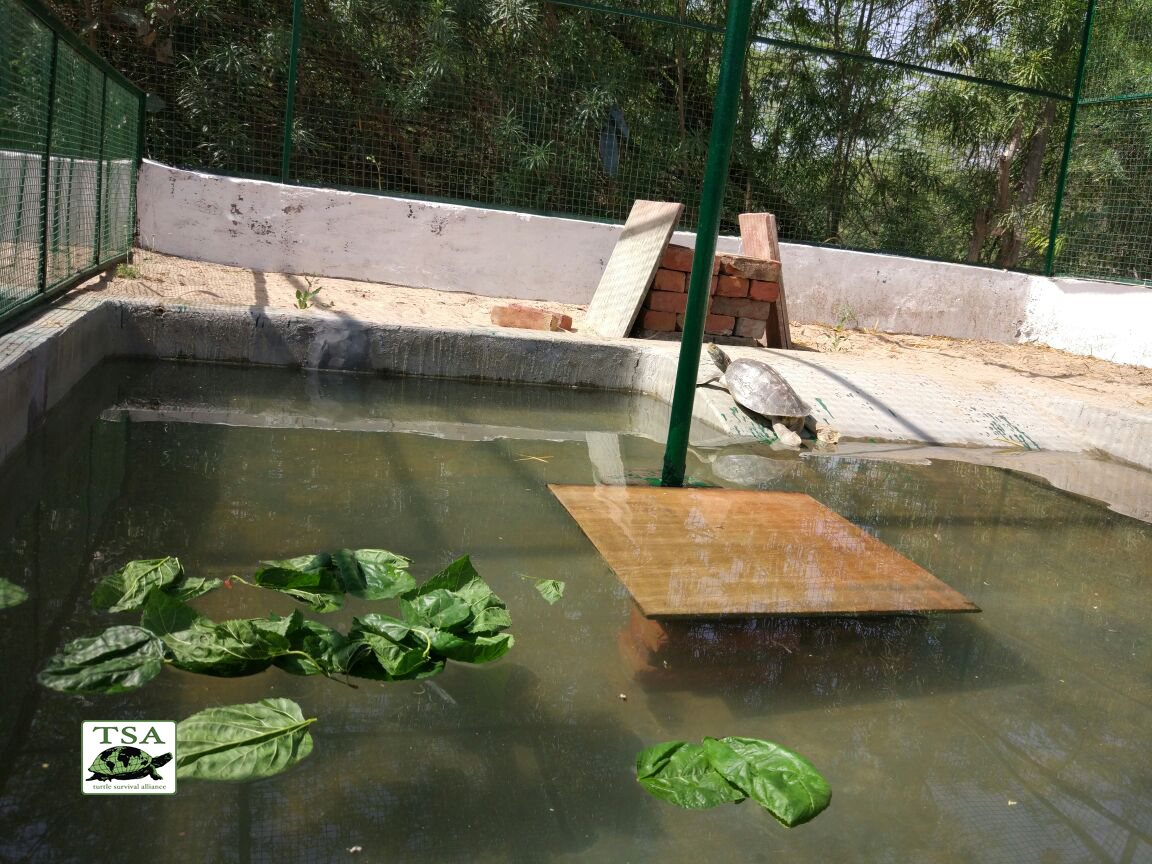
Quarantine habitat at the Garhaita Turtle Conservation CentreCurrently, the 21 specimens are receiving high-quality husbandry and are thriving in quarantine at the joint Turtle Survival Alliance/Uttar Pradesh Forest and Wildlife Department’s Garhaita Turtle Conservation Centre in the Etawah District of Uttar Pradesh. Developed in 2008, the facility within the sanctuary provides education, husbandry, incubation, and conducts nest protection programs for two of TSA’s focal species in B. kachuga and the Indian narrow-headed softshell turtle, Chitra indica. This quarantine period is paramount to the future survival of these specimens. In this setting they can be carefully monitored for symptoms that may arise following the stress they have endured from their capture, packaging, and subsequent confiscation.
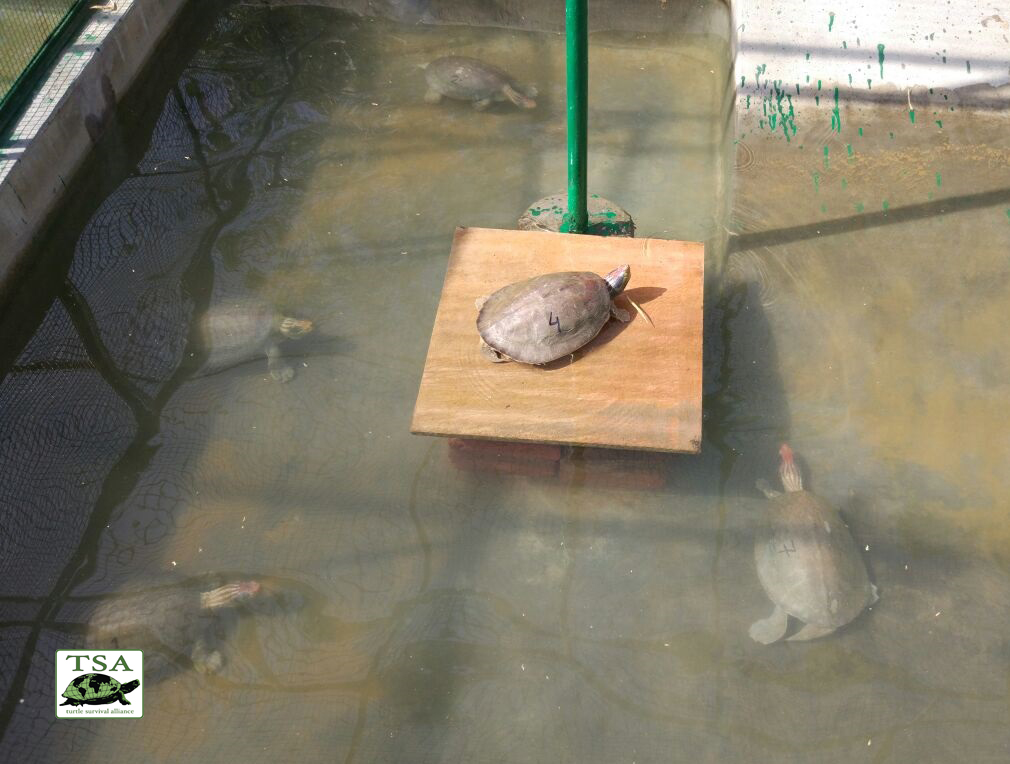

Several B. kachuga at the Garhaita Turtle Conservation Centre
With the species staring functional extinction down the nose, permission is being sought from the government to keep six males from this confiscated group for breeding efforts. Located at the Kukrail Gharial and Turtle Centre in Lucknow, India and the Kanpur Zoological Gardens, situated along the Ganges River in Kanpur, India, the Turtle Survival Alliance and the Uttar Pradesh Forest and Wildlife Department has established assurance colonies for B. kachuga. These six males will provide critical new bloodlines to the existing populations at these two assurance colonies.
Cleaning the carapace of a male turtle during processingWhile the threat of poaching is still a very viable one, the project team has expressed that it is in the best interest of the Chambal River population of this critically endangered turtle to release the remaining 15 individuals into their native home. Although placing all the individuals into assurance colonies is a thought that sounds appropriate to many, the initial poaching of the 23 individuals represents a sizeable loss to the population the Chambal. It is with this loss in mind that releasing the turtles is in the best interest of the genetic diversity and health of the remaining wild population. To help identify the individual turtles should they be seen again by researchers or, in a worst-case-scenario, harvested again by poachers, all the individuals will be inserted with a tiny passive integrated transponder (PIT) tag to identify them.
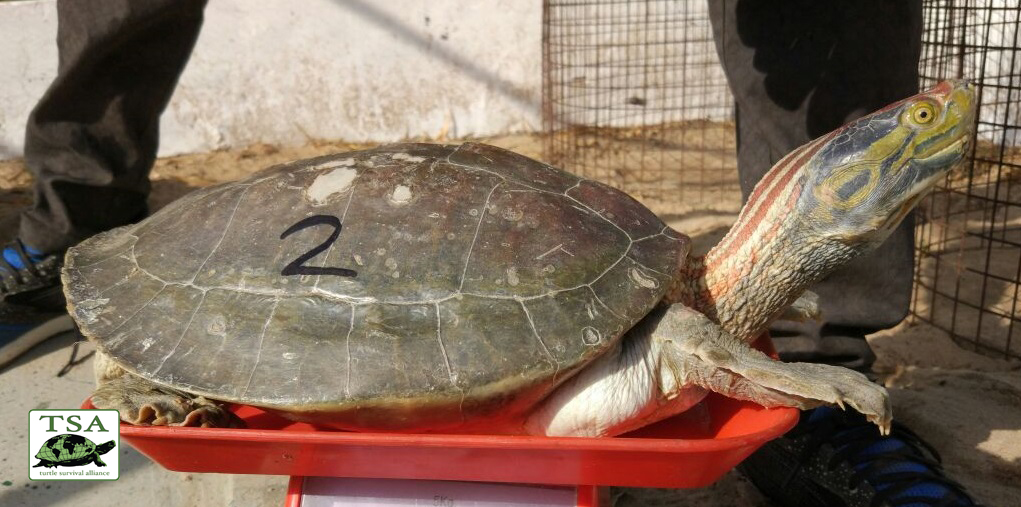
Through the effective and timely communication, collaboration and swift response by law-enforcement, governmental departments, and conservation organizations, most of these poached turtles will once again swim the waters of the Chambal and reproduce to further the continuation of their species here on Earth. It is only through the work of these dedicated and persistent individuals that a future remains for the rapidly disappearing rainbow of the turtle world, the red-crowned roofed turtle.
Male B. kachuga is weighed during in-processingSpecial thanks is given to Aravind Chaturvedi and his team, Anil Patel, Suresh Chandra Rajput, Amit Singh, Kartick Satyanarayan, Nariman Vazifdar, Ille Raja, Saurav Gawan, and Shishubhan Singh for providing all necessary assistance and support while conducting this triage and rehabilitation. Principal Chief Conservator of Forests (Wildlife), Mr. Umendra Sharma, is thanked for granting all the necessary permissions.
